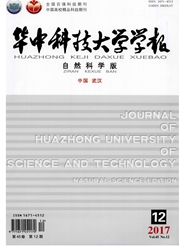

 中文摘要:
中文摘要:
为了在水电站水库优化调度中能对调度方案风险的大小进行量化,应用离散时间、非时齐马尔可夫决策过程,建立了水库中长期调度发电收益最小风险模型,以整个调度期发电收益未超过预先给定目标值的风险(概率)最小为优化准则.考虑到水电尽可能在高电价时段运行以获取更大利润,通过对电力系统的典型日负荷过程分析,确定水电厂时段收益电价与出力的函数关系.与期望发电效益最大模型相比,该模型适合需要对风险有直接限制的决策制定,以体现决策者的意愿或风险偏好.采用随机动态规划法对模型进行求解,并以三峡水电厂为实例,对所建立的模型进行检验,结果表明:该模型有利于水电厂调度人员作出风险决策,并实现水电厂的优化运行.
 英文摘要:
英文摘要:
In order to quantify the level of the risk for the hydropower scheduling, discrete time Markov decision process was studied and the minimum risk control model was established for the reservoir long-term generation optimization. The optimal scheduling criteria are the probability that the expected generation of the whole period not exceeding the pre-set generation target to be smallest. For the hydropower tends to operate as peak-clipping mode in market-based model to gain more profits, the function of electricity price and output can be founded by analyzing on the typical day load course of the electricity system. Compared with the generally used guidance of the largest expectation power generation model, this model is fitted for the decision-making in which the risk is needed to be limited to reflect the risk preference of the policy makers. Stochastic dynamic programming method is adopted to solve the model and the model is tested on the Three Gorges Hydropower Station. Results show that the model is conducive to get the risk decision-making and achieve the optimal operation of the hydropower station.
 同期刊论文项目
同期刊论文项目
 同项目期刊论文
同项目期刊论文
 期刊信息
期刊信息
